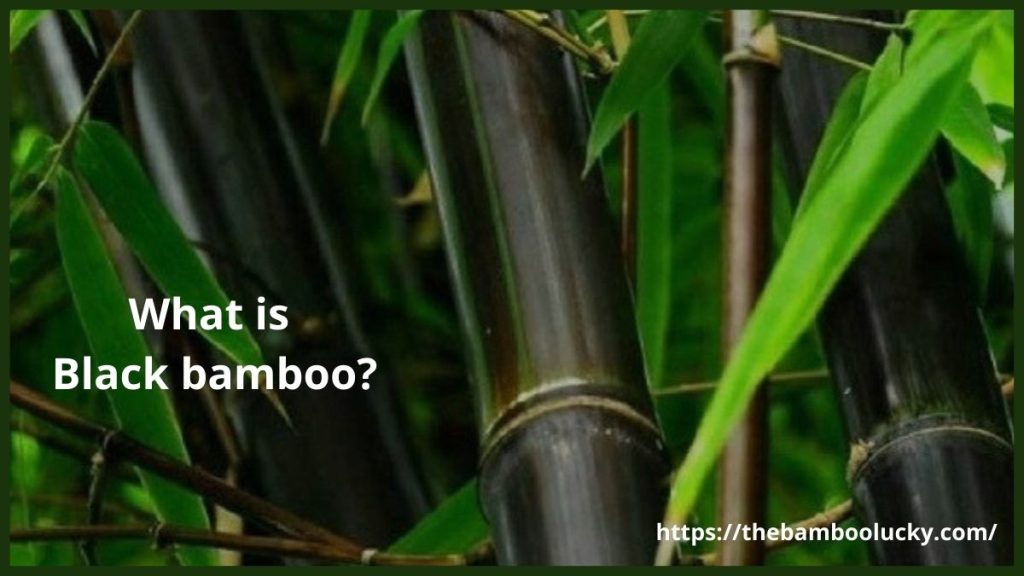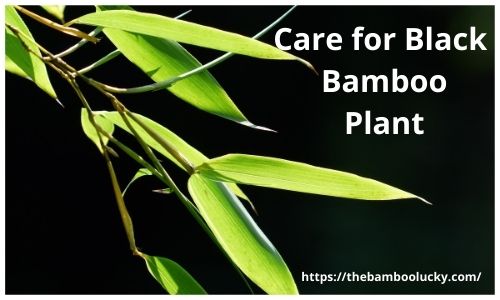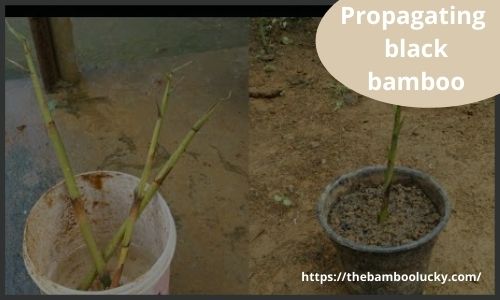Black bamboo is a striking choice for your garden or landscaping project or whatever you prefer for. It is known as the diet for panda bears. Before planting or caring Black bamboo plant, first you need to know what is Black bamboo!
Table of Contents
What is Black bamboo?
Phyllostachys nigra, is a scientific name of black Bamboo which is famous for its ebony-colored stalks, or culms. It is a running bamboo, which spreads and grows rapidly going through underground rhizomes. This can cause black bamboo to be very invasive if it is not in control.
Those who grow ‘Black Bamboo’ in western gardens will love its graceful habits. The sharp contrast of color provided by the dark culms and green foliage is very desirable.
However, its rapid growth is not bad in all the times. Black bamboo is perfect for creating dense walls, natural privacy fences or noise barriers within the house. Black bamboo culms first appear green before transitioning to their black coloring during the second or third year of growth period. These culms leaves support bright green, long, lance-shaped leaves, providing a striking contrast against their black color.
This type variety of bamboo can grow up to 30 feet high with each culm leaves growing up to two inches thick. It is one of the hardiest bamboo species that can be grown in colder climates than the other types of bamboo. Even northern gardeners also enjoy this tropical plant by taking them in indoors for the winter season.
How to care for black bamboo plant?
Black bamboo can grow easily under light conditions, from full sun to partial shade. New black bamboo plantings should be watered regularly until they established properly. The addition of mulch around the base of black bamboo plants should be considered to retain moisture in the plant. Black bamboo prefers soil which is moist and loamy with a soil pH ranging from highly acidic to slightly alkaline. Fertilizing is not mandatory for growing black bamboo plant, but you can do so in mid to late spring with a fertilizer which is high in nitrogen.
Black bamboo loves water and will benefit your plant soil from a consistent watering schedule. Try to keep your soil moist, but never soggy at all. For bamboo plants , which you kept in a container will need to water more frequently. Depending on the humidity and temperature in your area, you need to water these plants as often as every other day.
For those living in areas with harsh winters, black bamboo can be easily grown in containers and brought indoors for the colder months. For humidity, black bamboo is quite tolerant in nature of varying conditions. However, if you kept them indoors, the occasional misting will ensure for better growth and vitality of your black bamboo plant.
The shallow root system of black bamboo means that the harsh winds could damage or uproot them. Planting black bamboo in that area where it is easily sheltered from gusty conditions ideally. Most people have a pretty specific idea of what bamboo looks like, yet the plant actually comes in a different variety of sizes, shapes and colors.
Like most in vegetation, bamboo has green leaves but the stems, or culms, of a bamboo plant can be deep green, buttery yellow, blue, gray, or even magenta. Some of the most attractive bamboos have stripes on their culms and of course there’s black bamboo.
If you have one only bamboo plant in your garden, black bamboo might not be your first choice at all. If you have several however, adding a black species for a bit of variety is a great idea. The contrast of black bamboo poles amidst a good texture of greens and yellows which may produce a striking effect.
Even so, black bamboo does look beautiful on its own, because of its bright green foliage.
In addition to beautifying your garden or backyard with black bamboo, you may harvested and used for making some lovely arts, crafts and furniture.
Propagating black bamboo
Propagating bamboo is the simplest and best when done by division. It is ideal way to divide bamboo plants in the late winter or early spring.
- Water the bamboo well in the day before you plan to divide it.
- Before dividing, cut off the top of the plant to the 2/3 of the culm.
- Using a sharp spade, dig up the section you would like to divide form your plant.
- It’s upto you to keep the clump large or divide it into smaller sections of 3 or 4 culms each.
- Plant each section in a hole twice as wide as the root ball and mix in compost or other fertilizer to fill in the area.
Water the plant thoroughly and daily.
Bamboo is known to be a fast-growing plant, which adds appealing attitude towards natural privacy barrier. However, to keep check on the height of your black bamboo , you should plan to prune the plant to your desired height occasionally.
Pruning bamboo can lead to control the growth if it should be done in the spring season. The nodes of the plant provide an easy visual cue like where to cut back the height of each stalk or should cut each stalk just above a node. In addition, the unwanted growth in-ground black bamboo plants by cutting new shoots that sprout from the rhizomes to ground level.
Have a Look: 7 Bamboo Home Decor Ideas
Have a look : Best Bamboo Placement | Where to keep lucky bamboo plant
Black bamboo can easily be grown in containers, which is a perfect choice for those who have to deal with smaller yards or who want to keep it inside. While choosing a container, try to find out one which is short, wide, and bottom-heavy. Adding rocks to the bottom of the container can help black bamboo to grow tall and lighter.
Since black bamboo is a running bamboo and a rapid grower so, it may outgrow its pot quicker than any other species. You will need to repot once your black bamboo plant is root-bound.
Potted bamboo will need more water than plants in the ground, make sure to keep tabs on your soil moisture stability. Place your black bamboo plant pot in a sunny, wind-sheltered area and enjoy it’s striking looks with green foliage.




[…] Black Bamboo plants can be grown in containers and should be watered regularly as the restricted root space can dry out more quickly.Water every day in the height of the summer to reduce the frequency in the autumn. Apply a balanced liquid feed to the plant once a month over the summer.Don’t be surprised if your container grown plants shorter with narrower canes that’s because of the same varieties in the border. The size of the canes is supported by the size of the rootball because the growing area of the roots is limited in a container, thus the growth potential of the canes is also limited. […]
[…] Black Bamboo plants can be grown in containers and should be watered regularly as the restricted root space can dry out more quickly.Water every day in the height of the summer to reduce the frequency in the autumn. Apply a balanced liquid feed to the plant once a month over the summer.Don’t be surprised if your container grown plants shorter with narrower canes that’s because of the same varieties in the border. The size of the canes is supported by the size of the rootball because the growing area of the roots is limited in a container, thus the growth potential of the canes is also limited. […]
[…] Black bamboo is an ornamental and evergreen plant. Phyllostachys nigra is very easily recommended for landscape and bamboo garden projects as it makes a great bamboo hedge, windbreak, or privacy screen which looks fantastic in containers, and can be planted anywhere but have to provide sufficient sunlight where the sun is not completely blocked out, resulting in it being in full shade. […]
[…] you are interested in growing black bamboo from seed, there are a few things you should know. First, it is important to choose a quality seed […]
[…] many places around the world, but it’s important to know how to transplant it so that it will grow healthy and thrive. Keep reading to learn how to transplant black bamboo […]